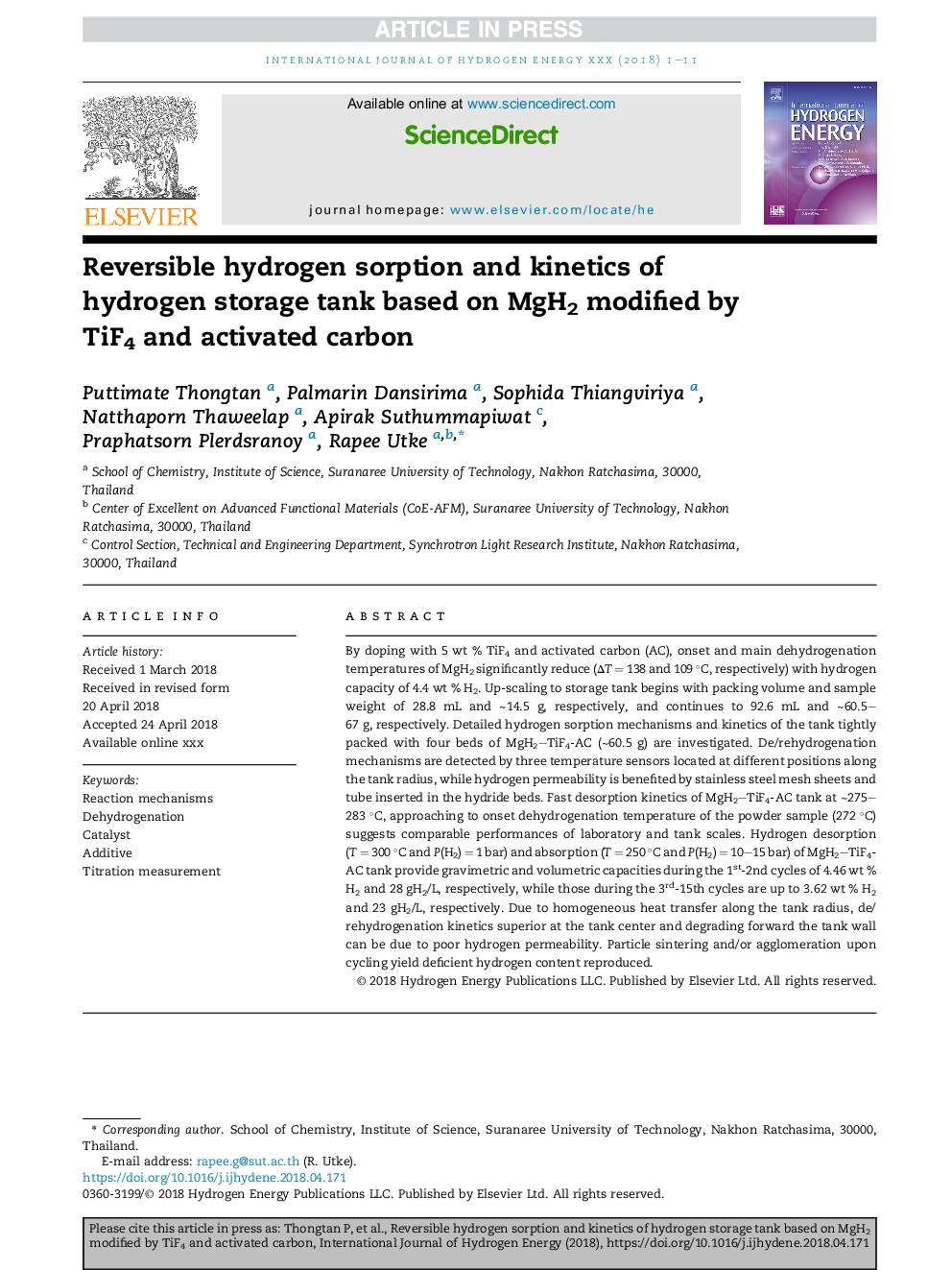| Article ID | Journal | Published Year | Pages | File Type |
|---|---|---|---|---|
| 7705600 | International Journal of Hydrogen Energy | 2018 | 11 Pages |
Abstract
By doping with 5 wt % TiF4 and activated carbon (AC), onset and main dehydrogenation temperatures of MgH2 significantly reduce (ÎT = 138 and 109 °C, respectively) with hydrogen capacity of 4.4 wt % H2. Up-scaling to storage tank begins with packing volume and sample weight of 28.8 mL and â¼14.5 g, respectively, and continues to 92.6 mL and â¼60.5-67 g, respectively. Detailed hydrogen sorption mechanisms and kinetics of the tank tightly packed with four beds of MgH2TiF4-AC (â¼60.5 g) are investigated. De/rehydrogenation mechanisms are detected by three temperature sensors located at different positions along the tank radius, while hydrogen permeability is benefited by stainless steel mesh sheets and tube inserted in the hydride beds. Fast desorption kinetics of MgH2TiF4-AC tank at â¼275-283 °C, approaching to onset dehydrogenation temperature of the powder sample (272 °C) suggests comparable performances of laboratory and tank scales. Hydrogen desorption (T = 300 °C and P(H2) = 1 bar) and absorption (T = 250 °C and P(H2) = 10-15 bar) of MgH2TiF4-AC tank provide gravimetric and volumetric capacities during the 1st-2nd cycles of 4.46 wt % H2 and 28 gH2/L, respectively, while those during the 3rd-15th cycles are up to 3.62 wt % H2 and 23 gH2/L, respectively. Due to homogeneous heat transfer along the tank radius, de/rehydrogenation kinetics superior at the tank center and degrading forward the tank wall can be due to poor hydrogen permeability. Particle sintering and/or agglomeration upon cycling yield deficient hydrogen content reproduced.
Related Topics
Physical Sciences and Engineering
Chemistry
Electrochemistry
Authors
Puttimate Thongtan, Palmarin Dansirima, Sophida Thiangviriya, Natthaporn Thaweelap, Apirak Suthummapiwat, Praphatsorn Plerdsranoy, Rapee Utke,
